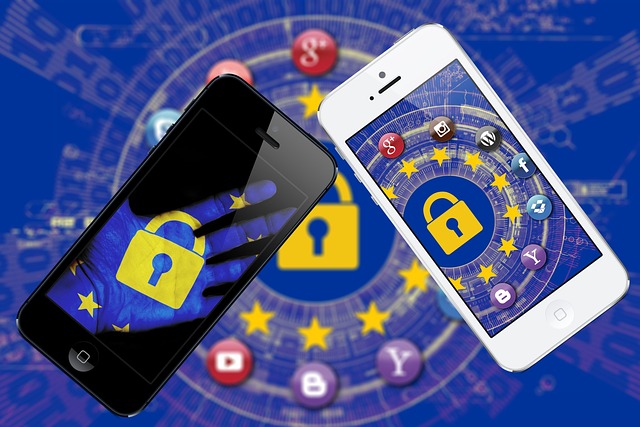The Role of Cybersecurity in Protecting Personal Data in the Digital Age
In today’s interconnected world, personal data is an invaluable asset. It powers everything from social media platforms and online banking to shopping experiences and healthcare services. With nearly every aspect of life now mediated through digital technologies, safeguarding personal data has become a critical priority. This is where cybersecurity comes into play — serving as the front-line defense against threats that seek to compromise or exploit personal information.
The Growing Importance of Personal Data
Personal data includes any information that can be used to identify an individual, such as names, addresses, phone numbers, financial details, medical records, and even online behaviors. As digital footprints expand, the amount of personal data generated and stored by various entities continues to increase exponentially. According to recent statistics, the world generates over 2.5 quintillion bytes of data each day, a significant portion of which is sensitive information that can be exploited by cybercriminals.
This data-driven economy has led to a surge in cyberattacks targeting individuals, businesses, and governments. Cybercriminals seek to steal, manipulate, or sell personal data for illicit purposes, such as identity theft, fraud, or extortion. Consequently, the role of cybersecurity has never been more crucial in protecting personal data from malicious actors.
Understanding Cybersecurity
Cybersecurity encompasses a set of practices, technologies, and processes designed to protect computers, networks, programs, and data from attack, damage, or unauthorized access. At its core, cybersecurity aims to ensure the confidentiality, integrity, and availability of personal data.
- Confidentiality: Ensuring that sensitive data is only accessible by authorized individuals or systems. Encryption technologies play a vital role in safeguarding data confidentiality.
- Integrity: Maintaining the accuracy and reliability of data. This involves preventing unauthorized alterations, corruption, or manipulation of data.
- Availability: Ensuring that data is accessible when needed by authorized users, and is protected from downtime due to cyberattacks like Distributed Denial-of-Service (DDoS).
Key Cybersecurity Measures for Protecting Personal Data
Several cybersecurity practices and technologies help safeguard personal data from cyber threats. Some of the most crucial ones include:
- Encryption: Encryption is a technique used to transform data into an unreadable format that can only be decrypted by authorized parties. Encryption ensures that even if data is intercepted, it cannot be accessed or misused. Strong encryption is particularly important for protecting sensitive personal data such as passwords, bank account numbers, and health records.
- Multi-Factor Authentication (MFA): MFA adds an extra layer of security by requiring users to verify their identity through multiple methods. This typically includes something the user knows (a password), something the user has (a smartphone), and something the user is (a fingerprint or facial recognition). MFA significantly reduces the risk of unauthorized access to personal data.
- Regular Software Updates: Cybercriminals often exploit vulnerabilities in outdated software to gain unauthorized access. By regularly updating operating systems, applications, and security software, individuals and organizations can patch known vulnerabilities and strengthen their defenses against potential attacks.
- Firewalls and Antivirus Software: Firewalls act as barriers between trusted internal networks and untrusted external networks, preventing unauthorized access. Antivirus software scans systems for malware, viruses, and other harmful programs that can damage data or compromise privacy.
- Data Backup and Recovery: In the event of a ransomware attack or data breach, having regular backups of personal data can ensure it is not permanently lost. Backup systems, combined with disaster recovery plans, help recover data from compromised systems.
- Secure Online Practices: Individuals also play a vital role in protecting their data by adhering to best cybersecurity practices, such as using strong, unique passwords, avoiding suspicious emails or links (phishing attacks), and not sharing sensitive information over unsecured channels.
The Role of Governments and Organizations
While individuals must take steps to protect their personal data, governments and organizations also have a significant role in ensuring cybersecurity standards are maintained. Various regulations have been enacted worldwide to safeguard personal data, such as:
- General Data Protection Regulation (GDPR): This regulation, introduced by the European Union, sets strict guidelines for how businesses should collect, store, and process personal data. It also provides individuals with greater control over their data, including the right to access, delete, or correct their information.
- California Consumer Privacy Act (CCPA): This law provides California residents with rights regarding their personal data, such as the right to know what data is being collected, to opt-out of data sales, and to delete personal information.
- Cybersecurity Frameworks: Organizations are encouraged to adopt established cybersecurity frameworks such as the National Institute of Standards and Technology (NIST) Cybersecurity Framework, which helps businesses implement effective security measures.
- Data Breach Notification Laws: Many jurisdictions require organizations to inform affected individuals and authorities when a data breach occurs, ensuring transparency and the opportunity for individuals to take corrective actions.
The Future of Cybersecurity and Personal Data Protection
As technology continues to evolve, so too do the methods employed by cybercriminals. The rise of artificial intelligence (AI), machine learning, and the Internet of Things (IoT) introduces new complexities to the landscape of cybersecurity. Hackers are increasingly using AI to conduct more sophisticated and automated attacks, making it even more important to adopt cutting-edge cybersecurity practices.
In the future, advancements in quantum computing could potentially render current encryption methods obsolete, prompting the need for new encryption algorithms. As the digital landscape becomes more interconnected, the protection of personal data will require a more collaborative approach between governments, businesses, and individuals.
Conclusion
In the digital age, personal data is more vulnerable than ever before. Cybersecurity plays a critical role in protecting this valuable information from a variety of threats. Through a combination of advanced technologies, regulatory measures, and proactive security practices, we can build a safer digital environment where individuals’ personal data remains secure. As cyber threats continue to evolve, the importance of robust cybersecurity measures will only grow, making it imperative for everyone — from individuals to global organizations — to prioritize data protection in the digital era.

